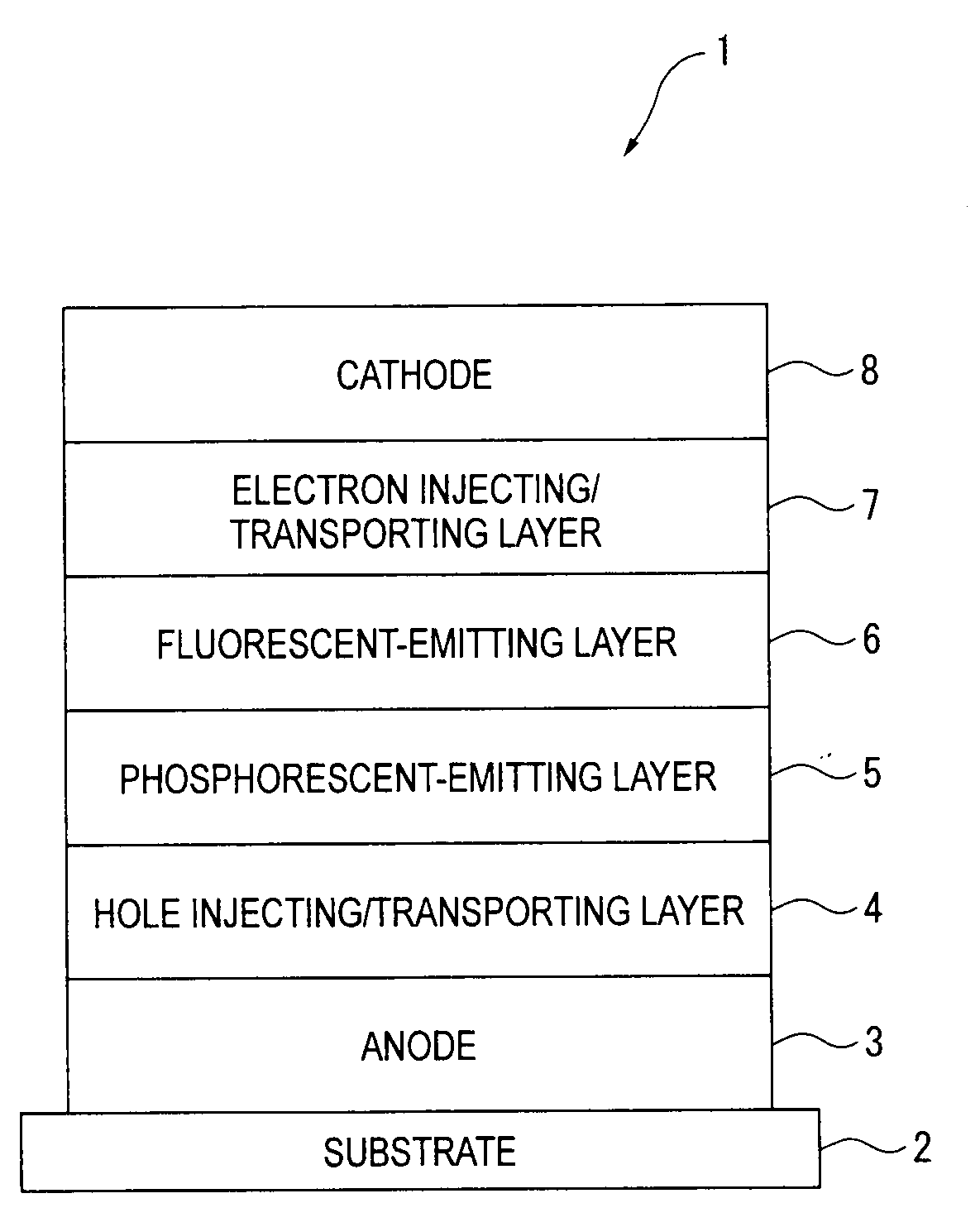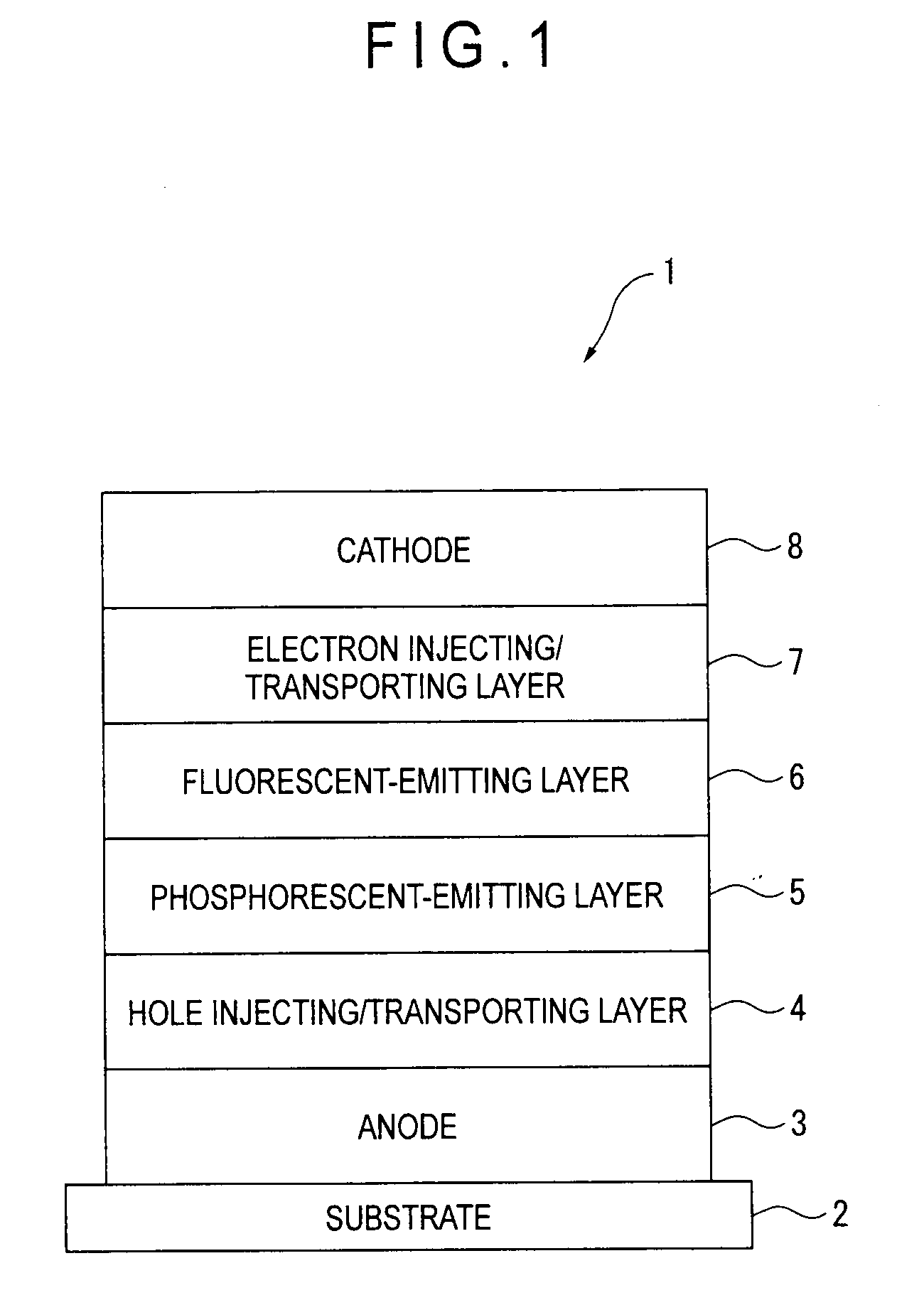Organic el device
a technology of organic el and phosphorescent materials, which is applied in the field of organic el devices, can solve the problems of low luminous efficiency of fluorescent blue emission, inability to provide short-wavelength emission (blue emission) at a practical level, and difficulty in balancing the mixed color (e.g., white balance). achieve the effect of long life and high luminous efficiency
- Summary
- Abstract
- Description
- Claims
- Application Information
AI Technical Summary
Benefits of technology
Problems solved by technology
Method used
Image
Examples
example 1
[0213]A glass substrate (size: 25 mm×75 mm×1.1 mm thick) having an ITO transparent electrode (manufactured by Geomatec Co., Ltd.) was ultrasonic-cleaned in isopropyl alcohol for five minutes, and then UV / ozone-cleaned for 30 minutes.
[0214]After the glass substrate having the transparent electrode line was cleaned, the glass substrate was mounted on a substrate holder of a vacuum deposition apparatus. Then, 55-nm thick film of 4,4′-bis[N-(1-naphthyl)-N-phenylamino] biphenyl (hereinafter abbreviated as “NPD film”) was initially formed by resistance heating deposition onto a surface of the glass substrate where the transparent electrode line was provided in a manner of covering the transparent electrode. The NPD film served as the hole injecting / transporting layer.
[0215]A 5-nm thick film of CBP, which was used as the red phosphorescent host, was formed on the NPD film by resistance heating deposition. At the same time, the following compound (PD), which was used as the red phosphoresce...
example 2
[0223]An organic EL device was manufactured in the same manner as Example 1, except that the following compound (AD2) was used as the fluorescent host in place of the compound (AD1).
example 3
[0224]An organic EL device was manufactured in the same manner as Example 1, except that the following compound (AD3) was used as the fluorescent host in place of the compound (AD1).
PUM
| Property | Measurement | Unit |
|---|---|---|
| Length | aaaaa | aaaaa |
| Wavelength | aaaaa | aaaaa |
| Wavelength | aaaaa | aaaaa |
Abstract
Description
Claims
Application Information
 Login to View More
Login to View More - R&D
- Intellectual Property
- Life Sciences
- Materials
- Tech Scout
- Unparalleled Data Quality
- Higher Quality Content
- 60% Fewer Hallucinations
Browse by: Latest US Patents, China's latest patents, Technical Efficacy Thesaurus, Application Domain, Technology Topic, Popular Technical Reports.
© 2025 PatSnap. All rights reserved.Legal|Privacy policy|Modern Slavery Act Transparency Statement|Sitemap|About US| Contact US: help@patsnap.com



